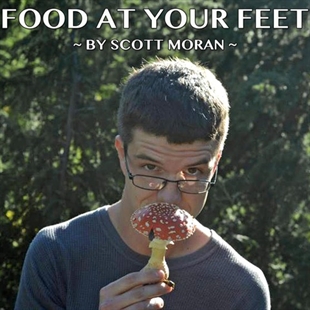
(SCOTT MORAN / iNFOnews.ca)
June 29, 2016 - 3:20 PM
OPINION
I remember the first time arugula was explained to me.
"It is like spicy lettuce," said my brother, who is a chef. There was a time when this leafy green would have been hard to find in a supermarket. Now it is part of a standard mix of leafy greens. Mizuna, shizo, collard, chard, raddichio, dandelion.
Diversity is great, and we have no shortage of it in our produce selection. Not everyone is so fortunate as we are in the Okanagan and Southern B.C., but that is changing rapidly across North America. We can thank chefs for that.
Locally and internationally, chefs are introducing us to foods and ideas that provide us with immediate and applicable solutions to some of our world's toughest problems. It is important to give credit up and down the chain. This extends to both the consumers for choosing to pay for diverse food, and the producers for choosing to grow variety at their own risk.
The Nordic food movement was started by Rene Redzepi and his restaurant Noma. Noma got attention quickly by being named the best restaurant in the world. Redzepi decided to use only local ingredients in his cuisine. This is not an easy choice if you cook in Copenhagen, Denmark. Arctic seafood, local farm crops, traditional Scandinavian beverages, and most notoriously, wild herbs. A
lthough he was not the first chef to use wild produce in his cooking, he was able to put the spotlight on what is possible if you adhere to strictly what is seasonal and local. These have spread like weeds!
It doesn't hurt that Noma and Rene Redzepi began hosting the MAD Food Symposium. This is a gathering of chefs, farmers, professors, foragers, fishermen, butchers, and more. Each year has a theme. The theme of the first annual symposium happened to be plants.
This event was a big influence in my decision to spend a year working in Europe to learn more about foraging. Up to that point I had just been a mushroom picker. I was able to spend several months foraging plants and other wild produce for chefs in France and England. The knowledge I gathered from foragers in Europe is the foundation for my current foraging business in the Okanagan. It was a journey sponsored by chefs, and they continue to provide the greatest inspiration to seek out new products. We all get to enjoy the trickle-down effect of this food culture as diverse produce becomes mainstream.
There is no shortage of local chefs willing to go for it when it comes to buying higher quality herb and vegetables from more local producers. The desire to use new ingredients is strong, and that is easy to understand. Until new ingredients become mainstream and easy to sell, producers have to get a high price for low volume. It is up to consumers to try something new.
Go for more than just a cheeseburger!
There are at least one or two chefs I know of that are held hostage to the burgers on their menu. If they take them off the menu, there is hell to pay. Chefs who have an adventurous menu take the risk of people walking away after taking a look at their menu and not understanding or liking what they see.
Supporting the use of diverse local produce can provide us with foods that have more nutrients, need less irrigation, and can help provide us local produce earlier and later in the seasons than ever before. It is easy to grow in July and August. The race is on to produce in April and November, thanks to the demand from local consumers.
— Scott Moran is a local forager discovering his own path to food freedom
News from © iNFOnews, 2016